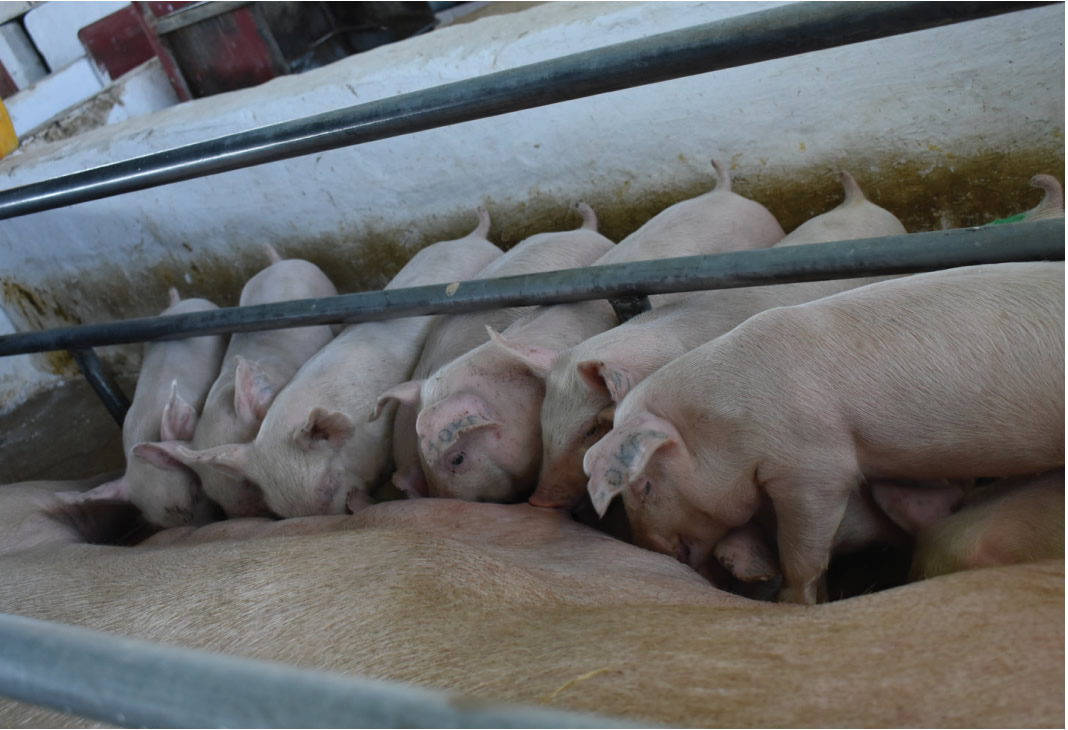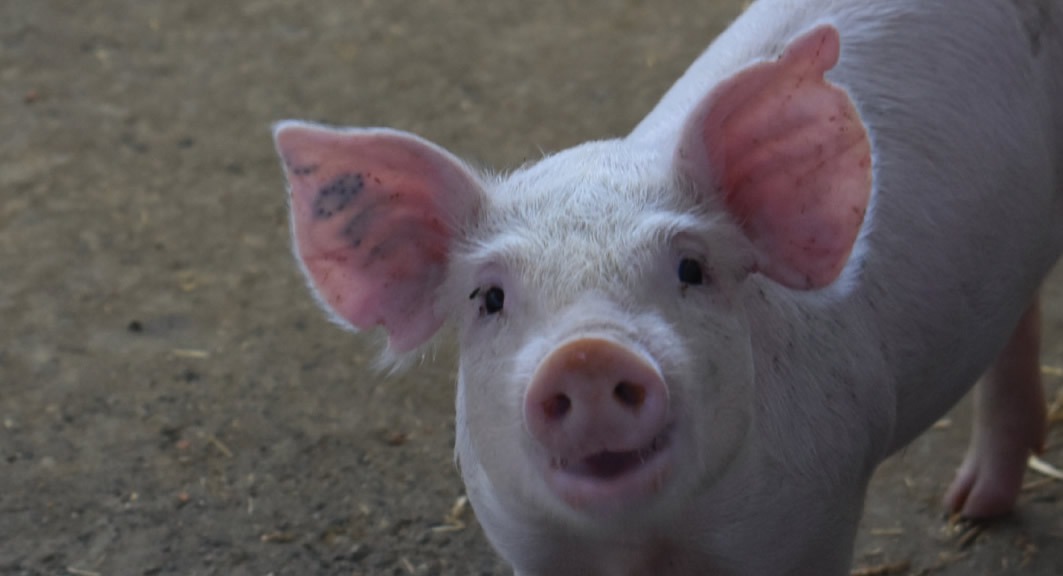Balancing Act of Swine Nutrition
by Marne VisagieProper nutrition is at the core of a successful pig farm. When we tune in on the nutritional aspect of feed, it will have a positive effect on sow quality and help us to produce high-quality piglets. Better piglets will then help our business to reach its maximum potential.
Gilt Nutrition
The gilt is the future of our herd. Purchasing good quality gilts from a reputable breeder will improve the genetics of our herd by increasing sow productivity. Our future herd must perform at optimum productivity while maximising longevity. Proper gilt nutrition will ensure that the gilt is at optimum body weight at first parity to ensure a productive animal.
A fast-growing gilt may suffer long-term health problems such as leg weakness. But, on the contrary, feeding a low-density diet may lead to nutrient and amino acid deficiencies. It is thus essential to supply a specially formulated diet that will meet the requirements of the gilt.
Consult with the breeding company regarding proper gilt nutrition, or purchase ready-to-service gilts from a reputable breeding company
Pregnant Sow Nutrition
The pregnant sow requires energy for maintenance, maternal growth and foetal development.
Correct nutrition during gestation will ensure the following:
- Proper weight and body condition at farrowing;
- Maximise reproductive performance;
- Meeting nutrient requirements while preventing overfeeding;
- Overfeeding during pregnancy will damage mammary glands and reduce feed intake during lactation.
Lactating Sow Nutrition
The greatest challenge during lactation is to maximise feed intake to meet the energy requirements of the sow. During this phase, the sow needs to produce enough milk to ensure optimum litter growth while minimising sow weight loss.
 During lactation, the energy requirements are higher than the energy intake, and thus the sow needs to utilise her body reserves to meet the high energy requirements. Avoid a negative energy balance by ensuring that the sow has adequate body reserves. The best time to build reserves is during lactation. However, we need to be careful to not overfeed during the gestation period.
During lactation, the energy requirements are higher than the energy intake, and thus the sow needs to utilise her body reserves to meet the high energy requirements. Avoid a negative energy balance by ensuring that the sow has adequate body reserves. The best time to build reserves is during lactation. However, we need to be careful to not overfeed during the gestation period.
There is a fine line to ensure that nutrition in gestation and lactation are well balanced to support sow productivity and longevity.
Piglet Feeding
A young piglet has minimised enzymatic capacity to digest complex carbohydrates and proteins. It is thus essential to provide a creep feed that contains highly digestible ingredients such as milk by-products and animal proteins. Hence, we need to keep protein-based products, such as soya oilcake, to a minimum in the diet. A good quality creep feed will assist the piglet in adapting from a sow milk diet to a solid diet. The digestive enzymes need time to adjust to limit the occurrence of scours and digestive problems.
Introducing a creep diet will help develop correct gut microbiota and villi to ensure a healthy digestive tract throughout the lifetime of the piglet. As the piglet becomes older, they move to a weaner diet that consists of more plant-based proteins and less animal proteins and milk by-products. The weaner diet will help the digestive system to adapt to a grower and finisher diet that consists of only plant-based proteins without compromising gut health. A gradual transition between diets is essential in successful piglet rearing.
Raw Material Quality
 The quality of raw materials determines the quality of your finished feed. The quality of raw materials directly affects performance and thus, profitability. Good quality raw materials will ensure that nutrients are supplied to the pig for optimal performance and digestion consistently while reducing the adverse
effects of anti-nutritional factors.
The quality of raw materials determines the quality of your finished feed. The quality of raw materials directly affects performance and thus, profitability. Good quality raw materials will ensure that nutrients are supplied to the pig for optimal performance and digestion consistently while reducing the adverse
effects of anti-nutritional factors.
Although there are nutrient tables for each raw material, one must remember that there are still variations in nutrient composition. One of the primary raw materials used in pig diets is maize. Poor quality maize may contain mycotoxins, which can be detrimental to pig performance by reducing feed intake, and causing gastric ulcers.
What does Novatek do to ensure high quality products?
At Novatek Animal Feeds, we pride ourselves in the quality of not only our finished products but also our raw materials.
We test every batch of raw material for nutrients such as protein and moisture. We also check our maize and other raw materials for mycotoxins continuously to ensure that our clients always get the value and performance that they deserve. We ensure a consistent product to our farmers by selecting our raw materials with care. It is for this reason that we highly recommend feeding a complete feed rather than a concentrate or macro pack. Most farmers are not able to test the quality of the raw materials that they purchase and thus are not always aware of what they are feeding to the animals. By supplying a complete feed, any variation or anti-nutritional factors are minimised, thus reducing your risk on the farm.
When purchasing your pig feed, always remember that quality is key!